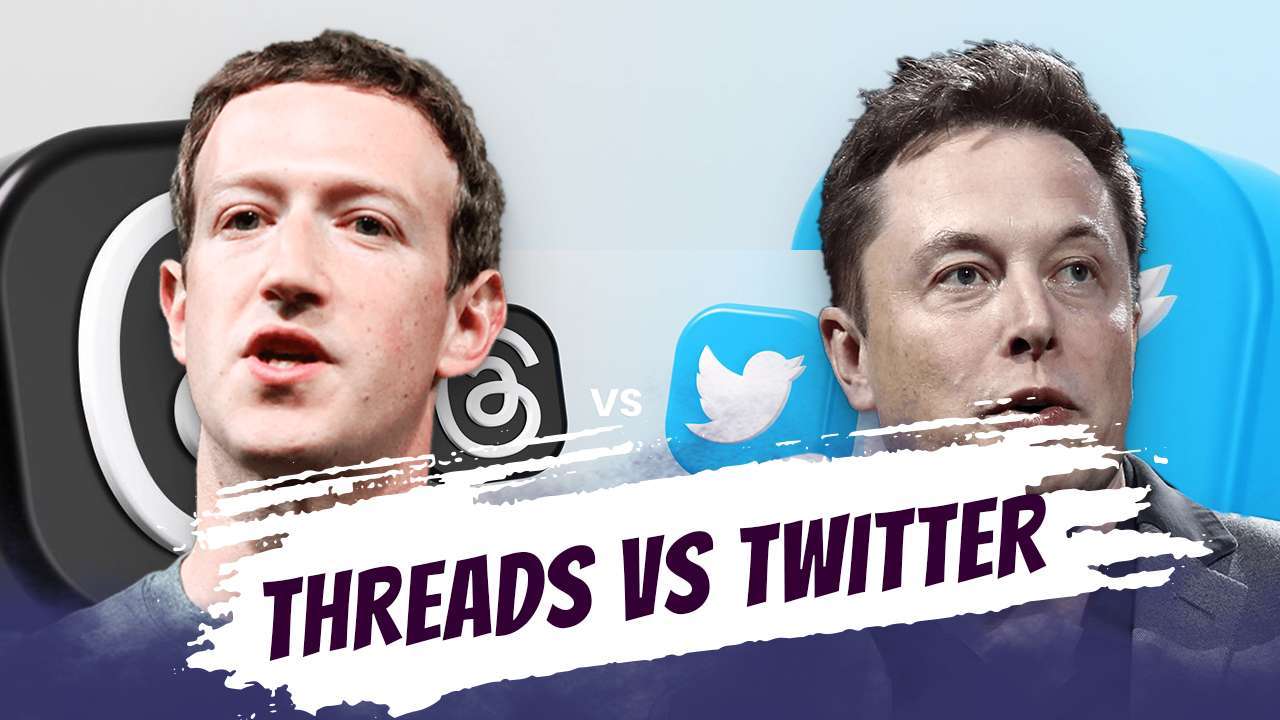
In the ever-evolving landscape of social media, text-based platforms have witnessed a surge in popularity, with Threads by Meta and Twitter being prominent contenders. Each platform offers a distinct approach to connect users through concise, text-focused content. Let’s delve into the comparison of Threads and Twitter to understand their unique features and functionalities.
Account Creation and Verification
Threads and Twitter differ in their approaches to account creation and verification. Threads, developed by Meta, is closely linked to Instagram. This integration enables users to create a Threads account effortlessly by using their existing Instagram login credentials. When they do this, any Instagram verification mark they possess is seamlessly transferred to Threads, enhancing the credibility and authenticity of their profile.
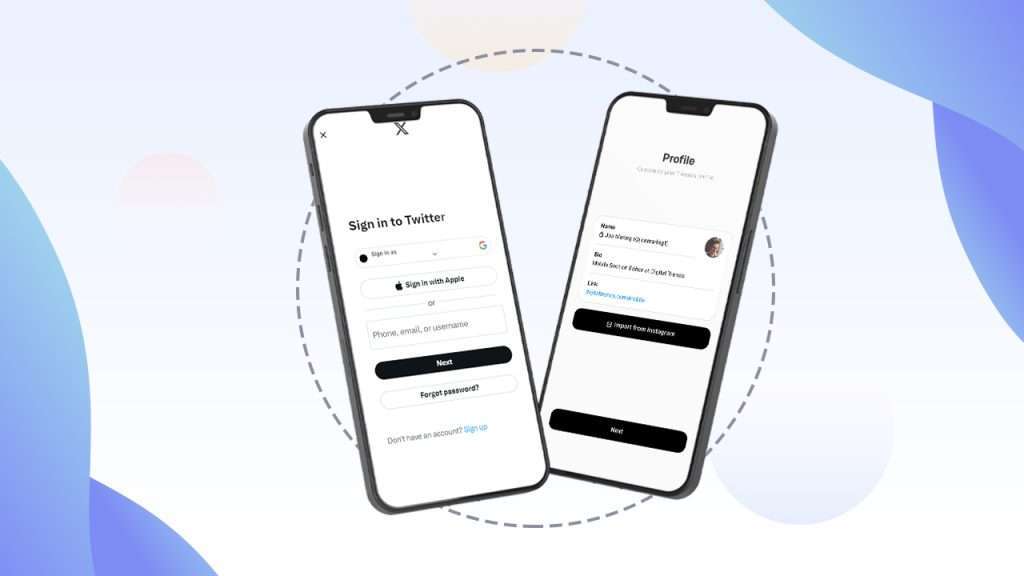
On the other hand, Twitter operates as a standalone platform with its own unique account creation process. Twitter requires users to provide an email or phone number and select a username for account creation. They use a separate blue checkmark verification system for public figures and brands. Threads, in contrast, integrates with Instagram, making account creation simpler by using Instagram credentials and verification.
Features and Limitations
Threads and Twitter offer distinct features and limitations that shape the user experience on each platform. Here are the differences:
Threads
Threads provides a clean and simple interface, emphasizing concise text-based content. Users are encouraged to share posts limited to 500 characters, promoting succinct and focused communication. Despite its focus on text, Threads does support multimedia elements. Users can incorporate images, videos, and GIFs into their posts, allowing for a more visually engaging experience. As a newer platform, Threads currently lacks some of the features that Twitter offers. Notably, it does not support long videos, direct messaging between users, and live audio rooms.
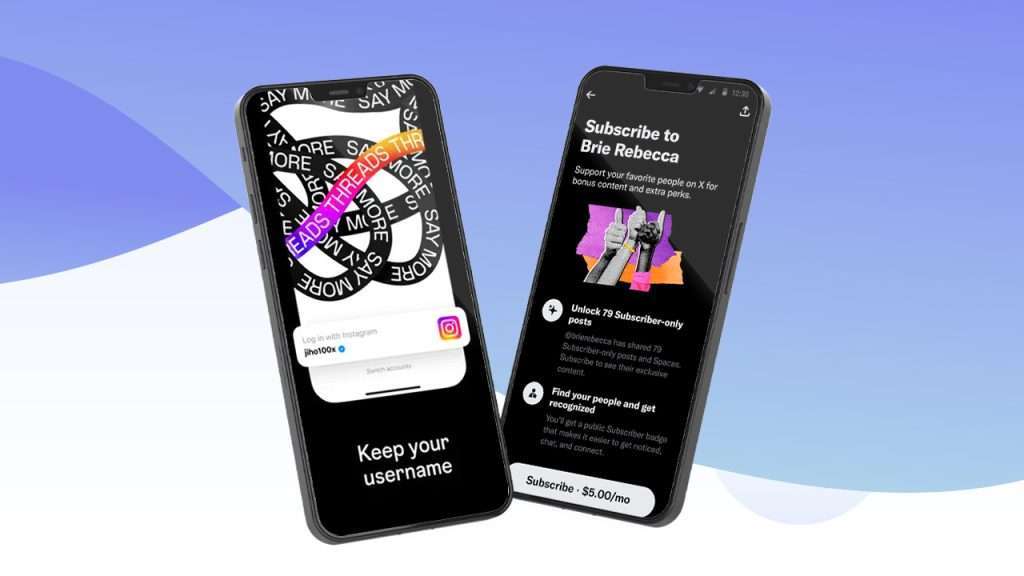
Twitter’s signature feature is its 280-character limit for tweets, offering users more room to express their thoughts and ideas compared to Threads’ 500-character limit. Twitter allows users to send direct messages to each other, enabling private conversations and enhanced interpersonal communication. It introduced the feature of “Spaces,” allowing users to host and participate in live audio conversations with others, fostering real-time engagement and community interactions.
Threads boasts a straightforward interface with a focus on concise text-based communication, supporting images, videos, and GIFs.
However, Threads currently lacks certain advanced features available on Twitter. These include longer tweets, direct messaging capabilities, and live audio rooms. In contrast, Twitter offers users the ability to create longer tweets, engage in direct messaging for conversations, and participate in live audio Spaces, which facilitate real-time interactions.
Each platform serves different preferences. Users must choose based on their priorities: Threads provides a more concise and straightforward approach, while Twitter offers a wider array of options for interaction and content sharing.
Paid Tiers and Ads
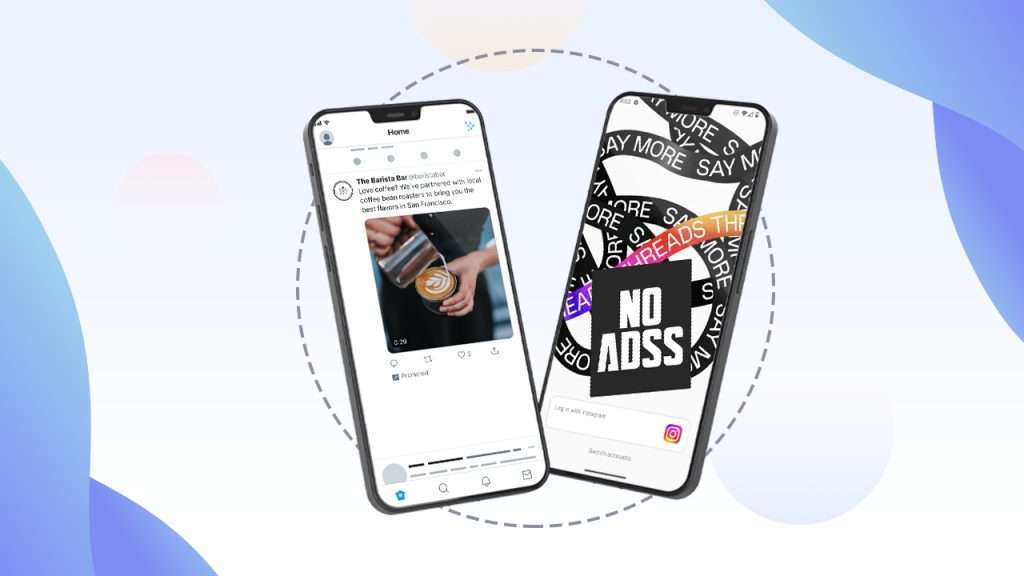
Threads, a text-based social networking app by Meta, stands out from Twitter due to its monetization approach. Threads prioritizes a user-friendly experience by abstaining from both paid tiers and advertisements. This deliberate choice aims to create an ad-free and interruption-free environment, enabling users to engage with content seamlessly. Threads focuses on fostering an inclusive and equitable atmosphere. In contrast, Twitter adopts a different strategy by offering various advertising options to generate revenue. This allows businesses and content creators to reach a broader audience by placing ads strategically in user feeds. While Twitter’s ad-supported model benefits businesses for targeted advertising, it also means that Twitter users encounter sponsored posts and ads in their timelines.
The contrasting approaches taken by Threads and Twitter in terms of paid tiers and ads reflect their respective priorities and business models. Threads focuses on providing an ad-free experience to its users, allowing them to focus on authentic content creation and engagement. On the other hand, Twitter leverages its advertising capabilities to support its platform’s growth and offer promotional opportunities to businesses and influencers. Ultimately, the choice between the two platforms depends on users’ preferences, with some favoring an ad-free experience on Threads and others appreciating Twitter’s ad-driven features for reaching a wider audience.
Availability and User Base

Threads and Twitter have distinct trajectories in the realm of text-based social networking. Threads, by Meta, is available in over 100 countries but faces privacy restrictions in the European Union. Despite these limitations, it gained rapid popularity, with 10 million signups within hours and 100 million users in just five days. In contrast, Twitter has a global reach without regional restrictions and boasts a massive user base of hundreds of millions. The choice between Threads and Twitter depends on user location and preference for a rapidly growing but regionally restricted platform (Threads) or a global and well-established social media giant (Twitter).
Algorithmic Timeline vs. Following Timeline
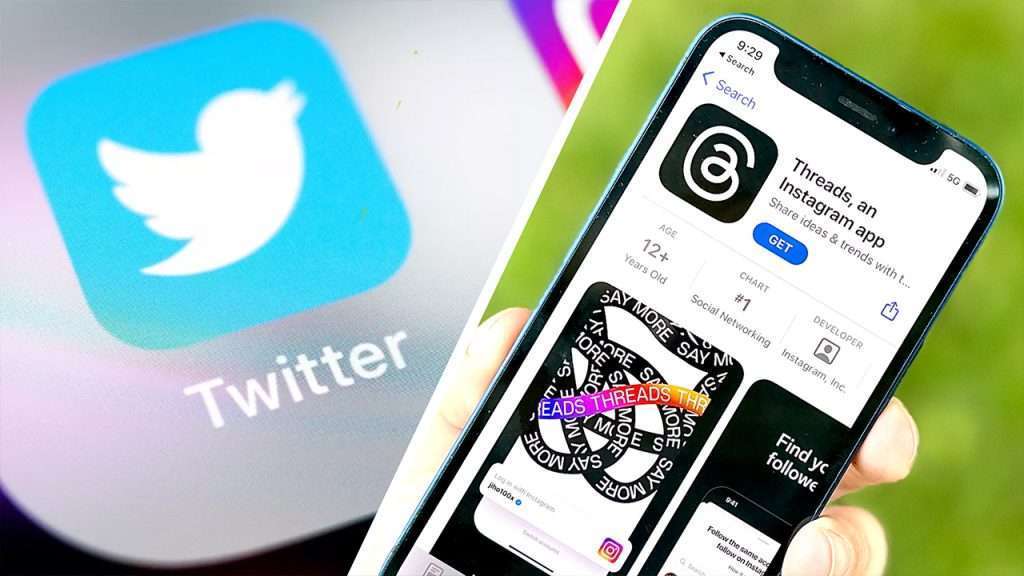
Threads and Twitter differ significantly in their timeline presentation, impacting how users engage with content. Threads uses an algorithmic home timeline that combines posts from followed and recommended accounts to offer a personalized and diverse feed. It aims to expose users to a wide range of content and connections. In contrast, Twitter employs a chronological timeline, displaying tweets in the order they were posted from accounts users actively follow. This real-time approach emphasizes up-to-date content delivery without algorithmic intervention, allowing users to engage with tweets as they are published.
The distinction between algorithmic and chronological timelines in Threads and Twitter respectively reflects their unique strategies for content curation and user experience. Threads’ algorithmic timeline aims to introduce users to new content and connections beyond their immediate network, fostering exploration and discovery. On the other hand, Twitter’s chronological timeline focuses on the most recent posts from followed accounts. This ensures a straightforward and timely information flow. Choosing between Threads and Twitter depends on user preferences for a personalized, curated experience or a linear, real-time feed tailored to their specific interests.
Direct Messaging & Sharing Threads
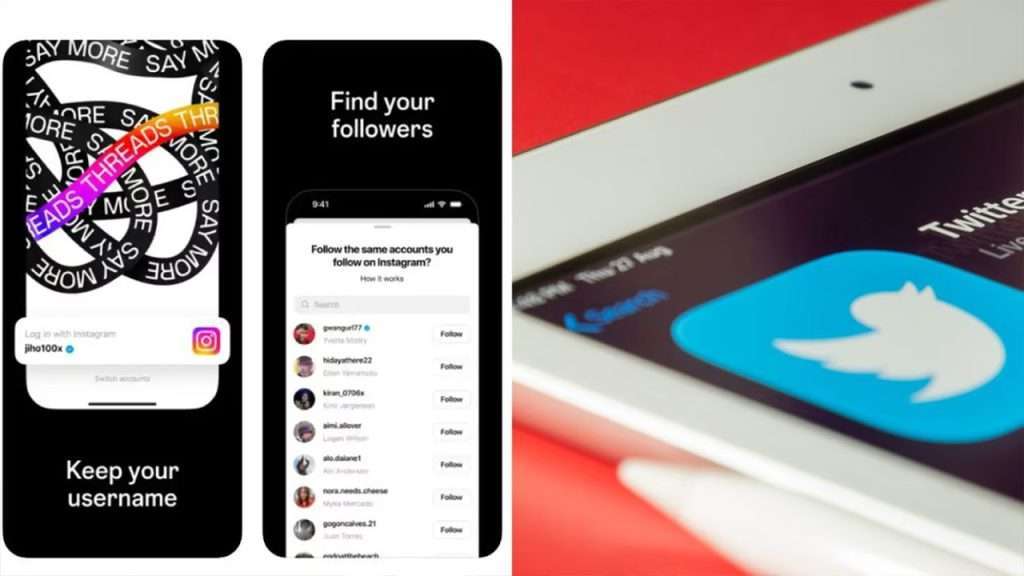
Direct messaging functionality on Threads and Twitter represents a distinctive contrast in how users engage in private conversations on these text-based social networking platforms. Threads adopts a unique approach by eschewing a traditional messaging inbox. Instead, it encourages users to share threads with other apps, promoting cross-platform engagement and interactions.
This means that private conversations on Threads aren’t limited to the Threads app alone. Users can communicate across various platforms seamlessly.
In contrast, Twitter provides a conventional direct messaging feature. It offers users a dedicated messaging inbox for private one-on-one or group conversations.
Twitter’s direct messaging capability promotes private and secure communication. It occurs directly within the platform, offering a more integrated and self-contained experience for users seeking private connections.
The different approaches to direct messaging on Threads and Twitter offer distinct advantages and cater to diverse user preferences.
Threads’ focus on sharing threads with other apps fosters flexibility and interoperability, allowing users to engage in private conversations. They’re not limited to one platform.
In contrast, Twitter’s traditional direct messaging feature creates a seamless and cohesive communication experience. It keeps private conversations within the platform, providing a convenient space for user-to-user interactions.
The choice between Threads and Twitter depends on users’ preferences. They can opt for a cross-platform messaging approach with Threads or a more self-contained, integrated direct messaging system offered by Twitter.
Decentralization & Data Collection
The concepts of decentralization and data collection play a significant role in differentiating Threads and Twitter in the realm of text-based social networking. At its launch, Threads did not belong to the fediverse, a decentralized network of interconnected servers that enable users to communicate across various platforms seamlessly. Threads lacked support for decentralized migration, meaning users could not easily move their accounts and data between different servers within the Fediverse. However, Meta, the parent company of Threads, has expressed intentions to integrate ActivityPub support in the future. ActivityPub is the protocol that powers the Fediverse, enabling decentralized communication and migration between servers. Once integrated, Threads users will have the freedom to migrate their accounts and data across servers, promoting a more open and flexible social networking experience.
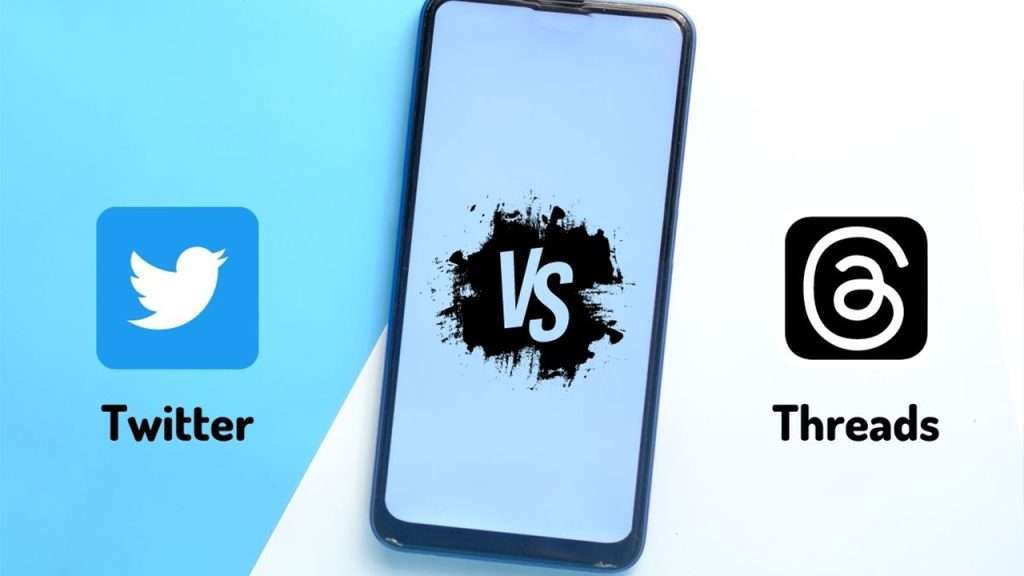
In contrast, Twitter operates as a centralized platform, with all user data stored and controlled on Twitter’s servers. The absence of decentralized migration support means that users are confined to Twitter’s ecosystem, limiting their ability to seamlessly interact with users on other platforms. Twitter retains full control over its data collection practices, which have been a subject of concern among users and privacy advocates. Threads, being tied to users’ Instagram accounts, raises similar data collection concerns. As an extension of Instagram, Threads’ data collection practices are linked to Instagram’s policies and practices, leading to questions about user privacy and data handling.
Final Thought
To simply put it, the distinction between Threads and Twitter lies in their approach to decentralization and data collection. Threads intends to embrace decentralization in the future, enabling user migration and promoting a more open social networking environment. In contrast, Twitter remains a centralized platform, limiting user mobility and retaining sole control over its data collection practices. When deciding between Threads and Twitter, users may consider the advantages of decentralized migration and data handling policies. This involves assessing how these platforms handle data and whether they allow users more control over their information.
Both Threads and Twitter offer distinct approaches to text-based social networking. Threads provides a fresh alternative with its connection to Instagram, absence of ads, and unique sharing mechanisms. Twitter, on the other hand, boasts a robust user base, longer tweets, direct messaging, and real-time engagement with live audio Spaces. As these platforms continue to evolve and adapt, users can expect exciting developments in the text-based social networking sphere.

Leave a Reply